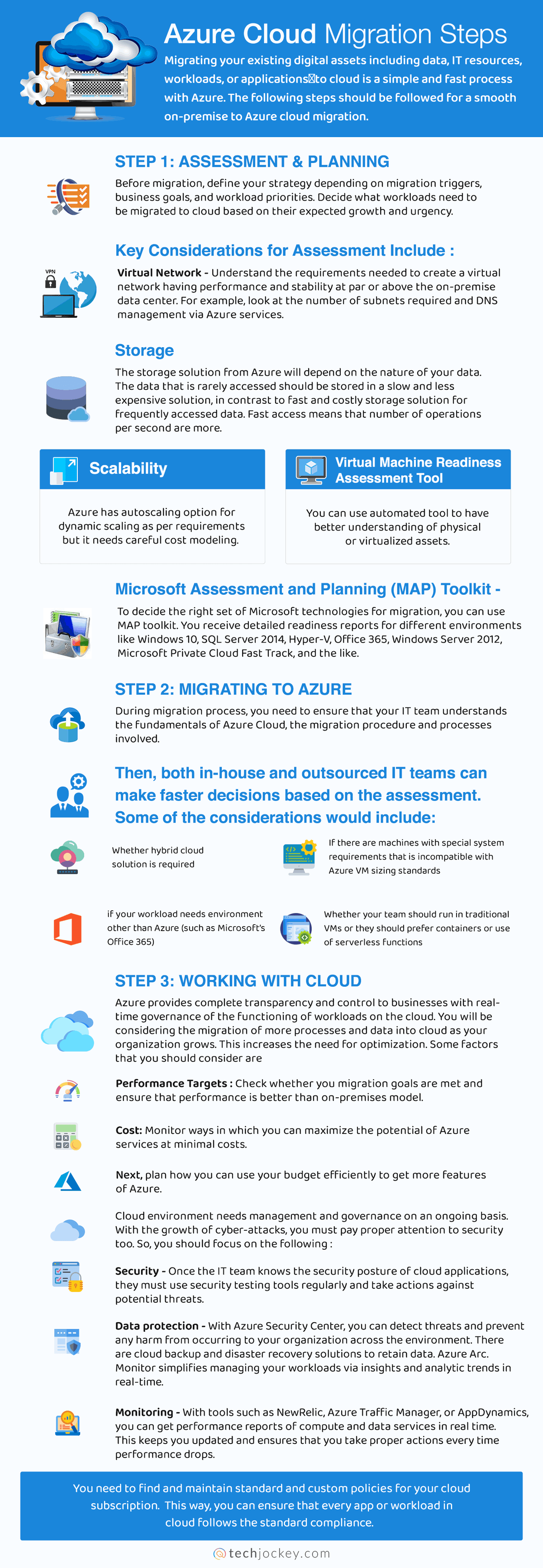Summary: The transition from on-premises infrastructure to the cloud has turned into a necessity to add scalability and cost-effectiveness to data storage and management systems. Microsoft Azure stands at the forefront of cloud computing, enabling users to host and run applications over the cloud.
Azure Cloud Service, a Platform as a Service (PaaS) by Microsoft, enables users to host and run applications in a scalable, reliable, and cost-effective manner. Primarily, Microsoft Azure offers services for creating Virtual Machines, managing & storing databases, managing application life cycles, Active Directory Domain Services (ADDS), and more.
Companies across different industries have switched to the cloud with Microsoft Azure due to the various benefits it provides, including cost-effectiveness, data security, IaaS and PaaS services, versatility, and scalability.
What is Azure Cloud Service?
Azure Cloud Service is a Platform as a Service (PaaS) by Microsoft that allows users to host and run applications in a scalable, reliable and cost-effective manner. Developers can build web or mobile apps faster without setting up or managing infrastructure on their own. Based on the application and settings that you provide, Azure can automatically take care of configuration during deployment, patching, and more.

Microsoft Azure
Starting Price
Price on Request
With Azure Cloud Services, there can be two types of roles based on hosting on the virtual machines (VMs). First, you can use a web role to deploy and host your web applications automatically.
Secondly, you can employ a worker role to run standalone background applications. In a complex application, you might use both, that is, a web role for communication with the user and a worker role for processing.
What is Microsoft Azure Used For?

Microsoft Azure saves time and money and provides a secure cloud for business. Azure services are updated to help manage production, testing, and deployment of applications or services effectively. Microsoft Azure can be used for the following:
1. Creating Virtual Machines (VM)
A virtual machine is the emulation of a physical computing system. With Azure, you can select templates from the marketplace or your images to create VMs. The purpose of these VMs is to act as if physical machines were present in your data center for hosting your applications and services.
2. Database and Storage
Azure provides a database as a service. Businesses can use SQL based relational databases for storing as much information as needed related to their applications. Both SQL and NoSQL data services provide business insights for decision making.
Microsoft has its data center in several locations worldwide to ensure that data is always safe and accessible. This avoids the need for having everything in the house and decreases the burden on your IT team.
3. Application Lifecycle Management
Open-source app developers get to collaborate with other IT teams globally with Azure. They can share the source code with anyone and track changes made by other community members. To simplify the development process, Visual Studio team services can be added as an add-on by companies for end-to-end management.
4. Application Services
The applications created on Azure cloud can run on all commonly used web and app platforms. Azure Marketplace provides numerous applications and services built by Microsoft or its technology partners for integration. Azure provides APIs for in-demand cloud services such as Salesforce, which can be integrated into different applications to quicken the pace of development.
5. Active Directory Domain Services (ADDS)
Active directory domain services by Azure make remote management simpler. Sysadmins have full control over users and systems without deploying, managing, and patch domain controllers (DCs). Users can migrate existing infrastructure and manage policies, Kerberos /NT LAN Manager authentication, and other domain services.
What are the Services Provided by Azure?
Microsoft Azure offers a range of cloud services for developing and deploying applications. Azure offers a scalable cloud infrastructure to run applications, containerize applications, deploy VMs, and so on. Given below are some of the core cloud services offered by Microsoft Azure:
- Virtual Machines: Azure VMs provide Linux and Windows virtual machines in seconds with the configurations required by users.
- Virtual Machine Scale Sets: VM scale sets by Azure offer a high availability of applications with the help of autoscaling for creating VMs at scale in minutes.
- Azure Spot Virtual Machines: Azure spot VM services allow users to get unused compute capacity to run their workloads at discounts.
- Azure Kubernetes Service (AKS): AKS helps in deploying and scaling containers on managed Kubernetes.
- Azure Functions: Azure functions allow the provision of an event-driven, serverless architecture to deploy applications.
- Azure Service Fabric: These services equip users with the capability to develop microservices and orchestrate containers on Windows and Linux OS.
- App Service: Azure app services offer a fully managed platform that allows users to create cloud applications for web and mobile.
- Azure Container Instances: With the help of Azure Container Instances help users to containerize applications and run containers with a single command.
- Batch: Batch services by Azure enable users to schedule and manage VMs.
- Cloud Services: Azure also offers cloud services for creating cloud applications and APIs.
- Azure Dedicated Host: With the help of Azure Dedicated Host, users can deploy Azure virtual machines on a physical server.
- Azure Modeling and Simulation Workbench: Azure modeling and simulation workbench is an on-demand service that provides a fully managed engineering, research, and simulation environment.
How Azure Cloud Computing Works?
Azure Cloud Platform offers various cloud computing services including platform as a service (PaaS), infrastructure as a service (IaaS), and managed database service capabilities. Azure uses virtualization technology to provide cloud computing services to users.
The computer hardware is permanently or semi-permanently emulated in software. Through these emulation layers, software instructions are mapped to hardware instructions, so that the virtualized hardware can be executed in the software.
This virtualized hardware is provided to the end users from a physical server or data center. These data centers comprise server racks, containing server blades and network switches. Through these data servers, network connectivity, and a power distribution unit (PDU) are provided.
Moreover, some servers run fabric controllers to provide cloud services that allocate services, monitor the health of servers, and repair servers when they fail. The fabric controllers are connected to other servers running cloud orchestration software.
The cloud orchestration software or front end hosts the web services, RESTful APIs, and internal Azure databases, which are used for all functions in the cloud. Azure offers various servers and networking hardware for running a complex set of distributed applications.
By maintaining hardware in physical environments, Azure offers an orchestration of virtualized hardware and software to the users for developing and deploying applications effectively on the cloud.
Why Choose Azure Cloud Computing for On-Premise to Cloud Migration?
Azure has gained a vast customer base in the cloud services market. Microsoft continues to launch new components in Azure to improve the capabilities of existing systems. Here are some of the major reasons to choose Azure for your cloud computing needs:
- Cost effectiveness
Azure can meet the need of every business, be it small, medium, or large. It has a pay-as-you-go pricing model to fit any budget and enables businesses to pay for only the resources they use.
It also saves the extra costs of deploying as well as maintaining hardware and software in-house, as Azure takes care of that. The apps are launched in a cloud that connects seamlessly to the globally located data centers of Microsoft.
- Data security
Azure follows industry standard practices like ISO 27001 and 27018 to keep data and services secure. It covers numerous compliance certifications and is a trustworthy platform for high-risk industries in various countries. Information access to different users is given through Identity and Access Management (IAM) capabilities that come with Azure Active Directory service.
Data centers are available across the world for easy migration of data and applications in different locations. It also has disaster recovery procedures to restore data in case some unforeseen event causes an infrastructure failure at one point.
- IaaS and PaaS Service
Azure combines the best of IaaS and PaaS capabilities to simplify enterprise application development and management. It offers the hybrid cloud so that businesses can choose what they want to keep on the public cloud, and the rest can be managed on a private cloud.
Enterprises can outsource their data center infrastructure and deploy VMs or application stacks. Users can access, monitor, and manage infrastructure from anywhere due to the IaaS model. PaaS model creates an environment to develop customized solutions rapidly without having to focus on the underlying setup.
- Versatility
Azure can be used by businesses catering to different industry domains such as healthcare, finance and banking, manufacturing, among others. It ensures regulatory compliance to meet the unique requirements of industry-specific applications, including the mission-critical ones.
Azure also provides functionalities for the latest popular technologies like Blockchain as a Service, Machine Learning, and Internet of Things to expand and improve existing applications.
- Scalability
Scalable Azure Cloud ensures the scalability to handle the surge in workload or traffic to the applications. Vertical scaling means that the capacity of resources can be increased or decreased according to requirements, whereas horizontal scaling involves changing instances of a resource.
With Azure Cloud, users can scale data storage capacity dynamically to integrate more data and processes while maintaining efficiency. The change in settings is simple and does not require technical capabilities like coding.
- Simple learning curve
Azure is very easy to get started with. It has support for various frameworks and programming languages so that you can work with the ones you want. There is no need to learn new languages. Some examples include ASP.NET, C#, F#, Java, Node.js, JavaScript, and Python.
- Integration with other tools
Azure can integrate on-premise as well as cloud applications with the tools that are commonly used by businesses such as Microsoft Outlook, Office 365, and more. It aids protocols and open standards like XML, SOAP, REST and HTTP. It combines four integration tools, namely, API Management, Logic Apps, Service Bus, and Event Grid, to connect several independent systems together.
Suggested Comparison: Microsoft Azure VS Azure Devops
Azure Cloud Migration Steps
Migrating your existing digital assets, including data, IT resources, workloads, or applications, to cloud is a simple and fast process with Azure. The following steps should be followed for a smooth on-premise to Azure cloud migration.

Step 1: Assessment & Planning
Before migration, define your strategy depending on migration triggers, business goals, and workload priorities. Decide what workloads need to be migrated to the cloud based on their expected growth and urgency.
Comparing your total cost of ownership (TCO) for Azure with the on-premises deployment will give you a better idea. Discuss with your stakeholders how the cloud can help meet your organizational goals.
Key considerations for assessment include:
- Virtual network – Understand the requirements needed to create a virtual network having performance and stability at par or above the on-premise data center. For example, look at the number of subnets required and DNS management via Azure services.
- Storage – The storage solution from Azure will depend on the nature of your data. The data that is rarely accessed should be stored in a slow and less expensive solution, in contrast to a fast and costly storage solution for frequently accessed data. Fast access means that number of operations per second is more.
- Scalability – Azure has an autoscaling option for dynamic scaling as per requirements, but it needs careful cost modeling.
- Virtual Machine Readiness Assessment Tool – You can use automated tools to understand physical or virtualized assets better. It provides a checklist for migration like sizing needs, workload-level cost estimates, and so on.
Microsoft Assessment and Planning (MAP) Toolkit – To decide the right set of Microsoft technologies for migration, you can use the MAP toolkit. You receive detailed readiness reports for different environments like Windows 10, SQL Server 2014, Hyper-V, Office 365, Windows Server 2012, Microsoft Private Cloud Fast Track, and the like.
Working with a service provider that offers support during and after the migration process should be considered. This will ensure that you have someone with the requisite cloud skillset and any issues are resolved timely.
Once you have considered the cost, workload priorities, goals and timelines, procurement of resources, and various other factors, you can plan your migration project stepwise.
Step 2: Migrating to Azure
During the migration process, you need to ensure that your IT team understands the fundamentals of Azure Cloud, the migration procedure, and the processes involved. This will help inefficient decision-making and working with Azure. Investing in training will be a good idea as the learning curve is simple and would not incur a high cost.
Then, both in-house and outsourced IT teams can make faster decisions based on the assessment. Some of the considerations would include:
- Whether a hybrid cloud solution is required
- If there are machines with special system requirements that are incompatible with Azure VM sizing standards
- If your workload needs an environment other than Azure (such as Microsoft’s Office 365)
- Whether your team should run in traditional VMs or they should prefer containers or use of serverless functions
Once you have made the decisions, use automated tools to move different workloads into their respective cloud services. To avoid governance-related problems, set up pre-configured landing zones. For instance, you will have to move web-based applications into Azure App Service. The migration phase in the lifecycle will follow an iterative approach.
Step 3: Working with cloud
Azure provides complete transparency and control to businesses with real-time governance of the functioning of workloads on the cloud. You will be considering the migration of more processes and data into the cloud as your organization grows. This increases the need for optimization. Some factors that you should consider are:
Performance targets: Check whether your migration goals are met and ensure that performance is better than the on-premises model.
Cost: Monitor ways in which you can maximize the potential of Azure services at minimal costs.
Next, plan how you can use your budget efficiently to get more features of Azure.
Cloud environment needs management and governance on an ongoing basis. With the growth of cyber-attacks, you must pay proper attention to security too. So, you should focus on the following:
- Security- Once the IT team knows the security posture of cloud applications, they must use security testing tools regularly and take actions against potential threats.
- Data protection- With Azure Security Center, you can detect threats and prevent any harm from occurring to your organization across the environment. There are cloud backup and disaster recovery solutions to retain data. Azure Arc. Monitor simplifies managing your workloads via insights and analytic trends in real-time.
- Monitoring- With tools such as NewRelic, Azure Traffic Manager, or AppDynamics, you can get performance reports of compute and data services in real-time. This keeps you updated and ensures that you take proper actions every time performance drops.
You need to find and maintain standard and custom policies for your cloud subscription. This way, you can ensure that every app or workload in the cloud follows standard compliance.
Which Companies Use Azure Cloud – Success Stories
Some of the biggest companies in the world use Microsoft Azure’s assistance for their business processes. A few examples are discussed next.
Myntra
Myntra is a fashion eCommerce platform in India that was founded in 2007. With the massive growth in just a few years, it realized the need for a scalable and high-performing cloud-based supply chain management and inventory solution.
The Expectation
Besides long-term scalability and performance, the focus was on open-source support, data warehousing, big data analytics, and machine learning. Azure was able to provide this wide range of ecosystem functionalities. The company chose Microsoft Azure and completed the migration process with one of the largest global deployments within nine months.
The Migration Plan
With Microsoft, the company planned migration in three phases. In the first phase, only non-critical chain management (SCM) inbound and customer experience applications were migrated. In the next phase, critical SCM inbound was moved along with outbound. Finally, the mission-critical storefront services were deployed.
Microsoft product teams helped the company in employing Azure Synapse Analytics and Azure HDInsight. The data warehouse was spread across two Azure Synapse clusters that contained warehouse units. Azure Synapse Analytics is capable of processing huge amounts of data simultaneously at low latency. HDInsight handled traffic peaks and mitigated performance and stability issues while scaling on demand.
The Outcome
This led to a reduction of expenses and time saving when compared to building the entire system in-house. During Covid 2020 lockdown, Azure Synapse scaled to 30,000 warehouse units across the two clusters. HDInsight handled more than 4 million orders during the End of Reason Sale (EORS) event without any operational issues.
The result was a better ROI and smooth expansion across international markets. Myntra continues to improve its platform with the advanced capabilities of Azure. Its latest focus is on artificial intelligence (AI) and machine learning.
Urban Company
Urban Company (formerly UrbanClap), a home services provider in India and international regions like Singapore, Sydney, and UAE, has a network of thousands of professionals for high-quality services who can be booked via its mobile app and website.
The Expectation
It needed a strong, reliable, and secure way of verifying the professionals it sends to people’s homes. The aim was to avoid any process downtime in offering all possible services at the doorstep in time. The company chose to rely on cost-effective Microsoft Azure Cognitive Services that offer facial recognition APIs, domain-specific AI models, and data security for customer safety.
The Migration Plan
It partnered with Microsoft to develop a safety mechanism and proper assessment of professionals. Through Microsoft Azure Cognitive services, the company set up an automated facial recognition pattern for identifying the faces of professionals in selfies when they reach the home of customers.
The Outcome
Images of professionals are updated with time to consider changes in appearance such as hair colour, weight loss, facial hair, and more. If someone else besides the assigned professional reaches the place, the Trust & Safety team takes necessary action. The onboarding process involves thorough background checks and intense training. There is OTP verification, and all industry standards are followed with Azure Cognitive Services.
Fortis Healthcare
Fortis Healthcare had an on-premise ERP for each of its hospitals. The highly distributed and localized IT setup was causing major issues like the inability to share patient records quickly to its hospital in a different location.
The Expectation
Fortis needed an effective and centralized IT infrastructure that was flexible, adaptive, scalable, agile, and secure to meet the changing needs of various departments. It would have been a time-consuming and costly process to deploy a newly created secure application on-premise for every location.
The Migration Plan
This is where Fortis management and Microsoft came together to develop an optimized cloud-only strategy. The organization moved all its applications such as Hospital Information System (HIS), application servers, Intranet, Oracle Supply Chain, and more to Azure cloud within eight months.
The Outcome
The benefits of Microsoft Azure Infrastructure as a Service (IaaS) were leveraged to manage its infrastructure and services. Testing and deploying new applications like Patient Care Portal became faster after migration.
The total cost of ownership was reduced to half, and management needs to be decreased. This helped in focusing on patients and providing them better care. More recently, Fortis has utilized Azure for data analytics and predictive healthcare also.
Ayushee is currently pursuing MBA Business Analytics from SCMHRD, Pune with a strong background in Electronics and Communication Engineering from IGDTUW. She has 2 plus years of full-time work experience as an SEO content writer and a Technology Journalist with a keen interest the amalgamation of business and... Read more





























